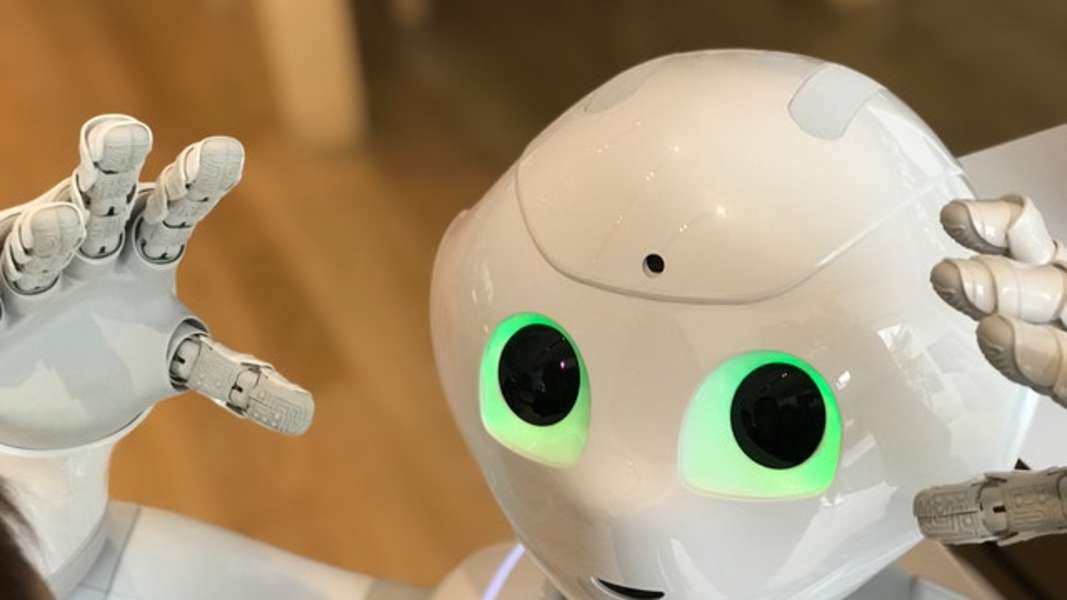2023 has already been quite the rollercoaster.
Trying to predict what the world of recruitment and HR will look like in 2023 might seem an impossible task. But as we ease ourselves into the new year, trends are starting to form.
We've put together a few of our predictions when it comes to recruitment and HR trends in 2023 and beyond.
1. Technologies will help to remove bias
Technology is empowering more companies to remove bias, using a technique called blind hiring. Blind hiring is a technique to block out an applicant's personal information that could influence or bias a hiring decision.
Types of bias that blind hiring removes include:
- Ageism
- Beauty Bias
- Demographic
- Affinity Bias
- Gender Bias
Bias in recruitment is a serious problem. Did you know that 58% of employees in their fifties or above have noticed age bias firsthand? According to Glassdoor, 76% of job seekers and employees today report that a diverse workforce is an important factor when evaluating companies and job offers.
Millennials increasingly want to work for companies that effectively balance people, the planet, and profitability. Avoiding discrimination and bias and optimising your hiring process is one way you can improve.
So how can you implement blind hiring?
Well, first you need to understand and review your recruitment process, to identify any areas that might be vulnerable to bias. Second, research some technology platforms that enable you to remove unconscious bias.
Here are a few excellent tools you might consider:
- Blendoor: Blendoor is a mobile job-matching app that obscures the names and photos of candidates, to combat unconscious bias and facilitate diversity recruiting in tech companies.
- Textio: A fantastic tool that reviews your job descriptions for words that indicate gender bias. It alerts you to problematic phrasing in a job posting and makes suggestions to help you attract diverse, qualified candidates.
- Project Implicit: Project Implicit is the work of psychologists at several prestigious universities in America including Harvard, the University of Virginia, and the University of Washington. Their assessments, called Implicit Association Tests, attempt to identify and measure hidden biases.
- Gender Decoder for Job Ads: This handy web app helps you check your job descriptions and advertisements for linguistic gender biases.
- Gapjumpers: Gapjumpers is an awesome tool to spot implicit hiring bias through 'blind auditions'. It uses assessments and tests to evaluate candidates, instead of a classic resume.
2. Greater demand for more flexibility
Some people are thriving working from home, others not so much. The requirement of remote work has enabled employees to obtain a much healthier work-life balance; one that many are not going to want to say goodbye to any time soon.
Of course, we believe people are going to be keen to have some normality return, whether that be in the office, at work socials, or even just a working lunch. But we predict the end of full-time office work.
Expect candidates in 2023 to assume that roles come with the possibility of full-time remote working as standard.
3. Decision-making using augmented intelligence
Augmented intelligence uses technology to enhance human cognitive functions and supports decision-making when hiring. It's all about data. By building data around your candidates during pre-screening and shortlisting, augmented intelligence provides suggestions on who might be the right fit for the role.
Of course, it is only a suggestion and part of the human decision-making process is to consider other factors that an automated system might not take into account.
4. Soft skills will be more sought after
Soft skills such as collaboration, critical thinking, and communication will be prized in the same way more technical skills are.
Soft skills are an essential part of what makes someone great in a role, and being able to trust someone to be motivated and disciplined when away from the office will likely be of great significance in 2023.
5. Employer branding will shift its focus
How a business and its culture are seen by its existing and prospective employees has long been a method of standing out from the crowd and attracting the best talent. However, instead of advertising office-based perks (the classic ping-pong table and fully stocked beer fridge) and company-wide social events, there will be a shift in focus toward employee wellbeing.
Candidates are going to seek an employer they feel they can trust. What businesses have adapted well to change? How did they treat their existing employees during this tumultuous period? What is the contingency plan? How do they approach supporting the mental well-being of their staff?
Do not be surprised if these questions are posed to you by candidates in an interview.
6. More good hires and fewer bad ones
The average cost of one bad hire is nearly $15,000, according to Career Builder. And the average cost of losing a good hire can cost an organization nearly $30,000.
Companies are striving to improve their HR efficiency and recruitment processes to ensure they find the right candidates. As a recruiter, how can you spot a good hire from a bad one?
That's where pre-screening candidates comes in. With recruiters working remotely, you'll be sure to see an increase in pre-screening techniques and software to support shortlisting candidates.
Here are some trends we've already been noticing:
- Video and phone interviews
- Skills assessments and tests
- Blind hiring
7. A focus on well-being and happiness
According to a survey by Careers Advance Online, 80% of employees are unhappy in their current job, making it the number 1 reason for them to quit.
One of the most effective strategies in recruitment is to focus on employee retention, so you don't lose top talent and are forced to find replacements. We think employee well-being is essential and it will bring new challenges with remote working.
It's estimated that around 56% of the U.S. workforce currently has a compatible job, even if partially, with remote working.
Core challenges around remote working and well-being that recruiters should keep in mind:
- Loneliness and isolation
- Lack of exercise / poor eating
- Pressure to work extra hours or hours that they're not accustomed to
- Difficulties unplugging from work due to it being so accessible
- Stress due to a lack of [time management skills](https://www.picked.ai/soft-skills-tests/time-management/ that are required when working from home
All of these areas could form part of a well-being initiative and might help you in your journey to recruit candidates (and retain them).
8. Accommodating Gen Z workers
Gen Z is a generation of workers born after 1995 – probably the most diverse individuals in modern history. Millions of Gen Zers are about to enter the workforce, which will radically change recruiting and hiring.
Here are a few things you need to be aware of:
- Gen Z was affected more than any other generation in the workforce during COVID-19
- Gen Z believes strongly in social causes and will put pressure on brands to take action
- Gen Z wants to make an impact on the world
- They want to work for purpose-driven companies
So what does this mean from a recruitment perspective? You'll need to consider Gen Z as your future employees, do your research, and adapt your marketing and recruitment efforts to target this niche.
9. The gig economy
Temporary positions and one-off jobs are common in the gig economy. For recruiters, this means that (particularly on the agency side) you might find yourselves hiring for less permanent/full-time positions and increasingly promoting roles that are fixed, short term or contract-based projects.
10. Working from anywhere (WFA)
Enviable location? So what? Remote working can now be supported on a mass scale. Managers can conduct performance reviews, target setting, and training virtually. Employers who had to live near their office for commuting purposes are no longer restricted and may find themselves wanting to relocate to the coast or be closer to family.
Work from anywhere (or WFA) is a popular flexible work movement where organizations are offering employees the choice to work when, how, and where they want. Working from anywhere could entail working part-time in an office setting, working completely remotely, or a combination of the two.
We'll likely see an increase in people from all over the world working for companies with offices in completely different cities – and maybe even time zones.











